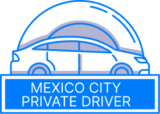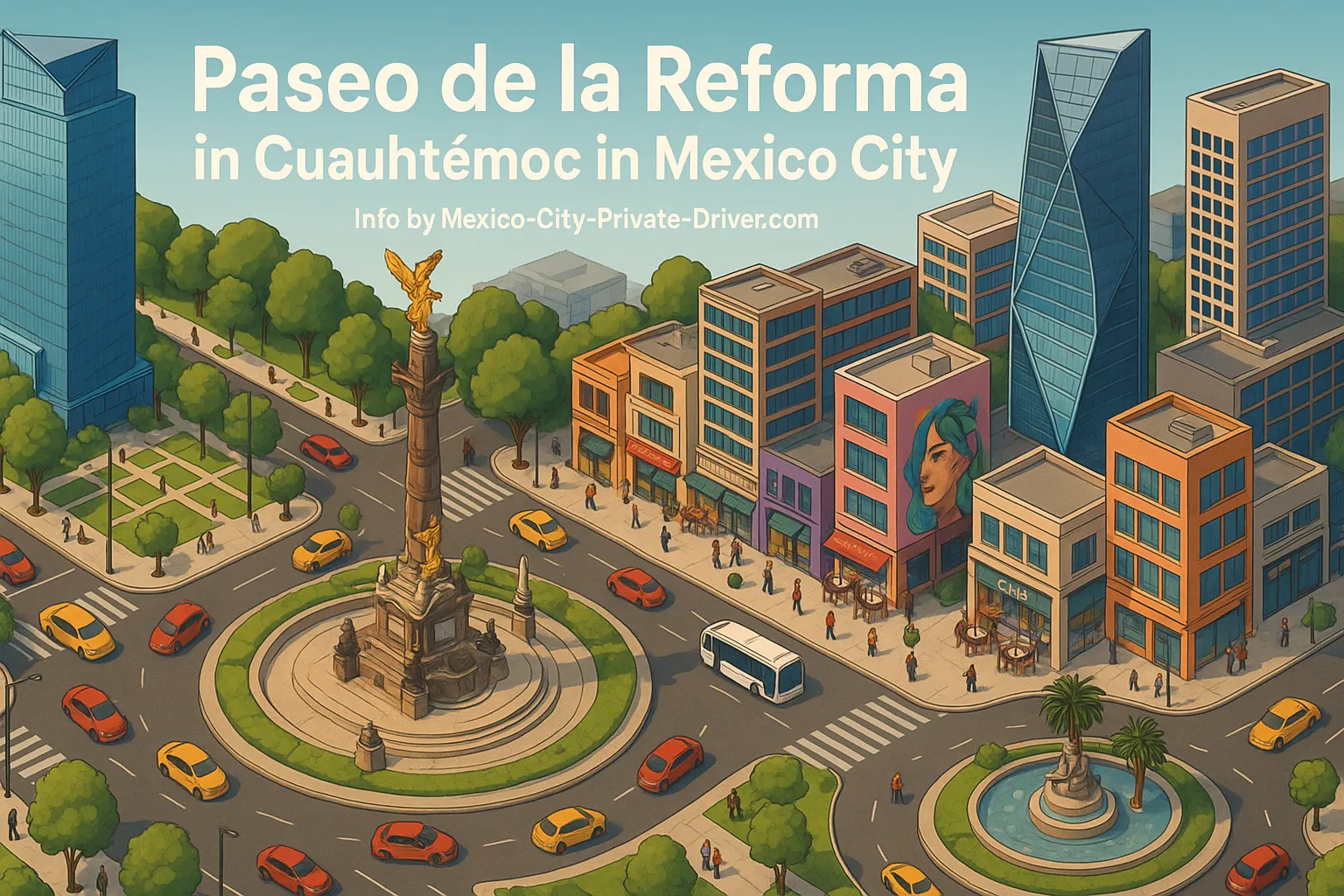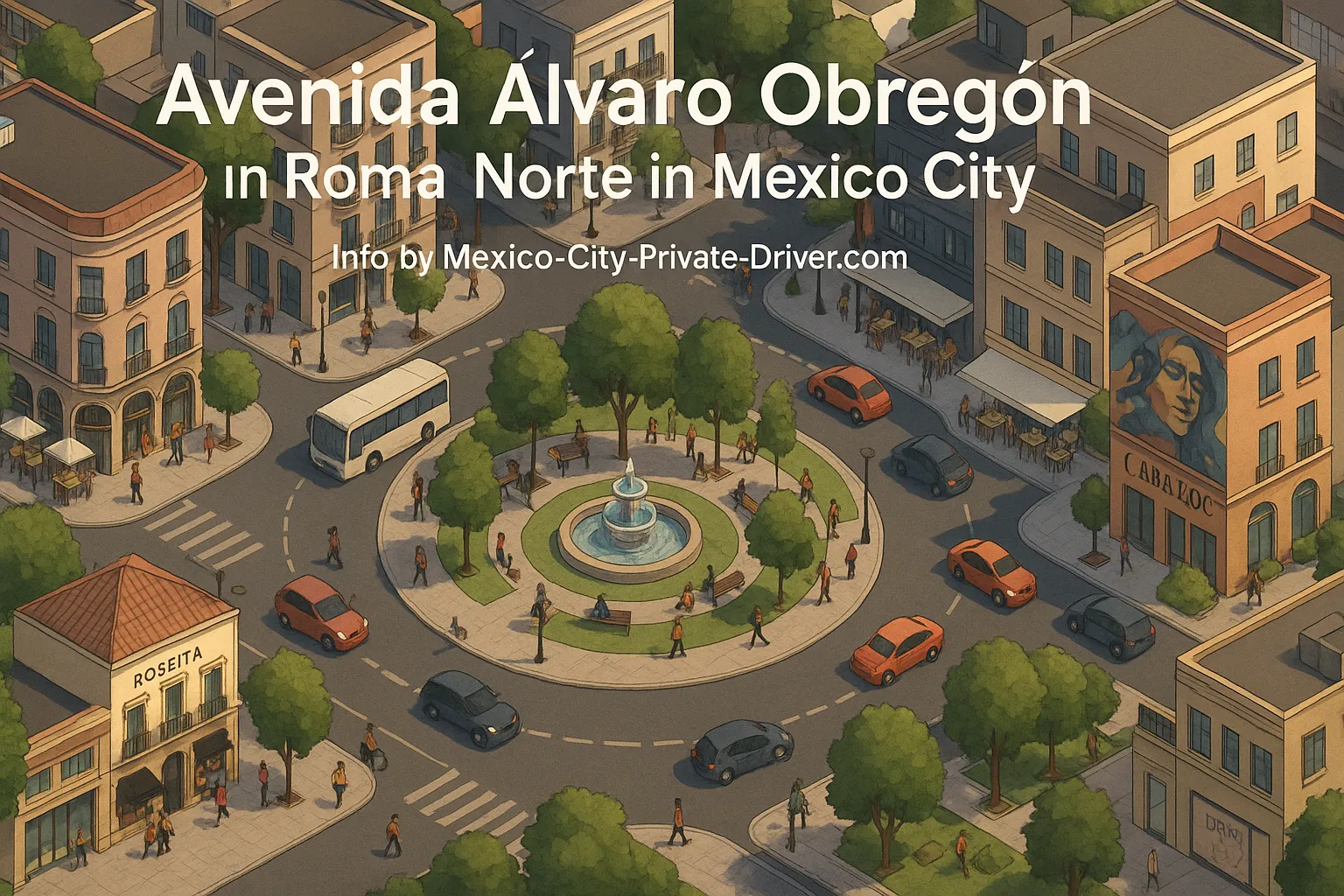Why Avenida Buenavista (Buenavista Avenue) matters to me — and to your Mexico City trip
As the owner and lead driver at Mexico-City-Private-Driver.com, I spend more time behind the wheel than most. One stretch of road I know intimately is Avenida Buenavista in the Cuauhtémoc borough of Mexico City. You might see it listed as Avenida Buenavista, Buenavista Avenue, Calle Buenavista, or simply Buenavista Street on maps and older guides. No matter the label, this corridor is a connective tissue in the north-central part of the city — a place where transport, culture, commerce and daily life intersect.
Over the years I have escorted diplomats, honeymooners, business travelers, families and film crews to and past Avenida Buenavista. In this guide I’ll share what I know as a driver: traffic rhythms, parking and pickup strategies, public transport links (Metro and Tren Suburbano), nearby attractions, and a few local secrets you won’t find in a typical travel brochure. I’ll also tell you one of my favorite “wow” stories from the area — something surprising and human that changed how I see this part of the city.
Quick orientation: where is Avenida Buenavista?
Avenida Buenavista sits in the Cuauhtémoc borough, north-west of the Centro Histórico and adjacent to neighborhoods such as Colonia Buenavista, Colonia Guerrero and, a short drive away, Colonia Condesa and Roma Norte. Because Mexico City’s street names and naming conventions vary by map and era, you’ll also find it indexed under variations like Buenavista Ave, Buenavista Street or sometimes referenced by nearby arteries — for instance when I plan routes I’ll think in relationships to Eje 1 Norte, Circuito Interior and Avenida Insurgentes.
Key public-transport landmarks on and near Avenida Buenavista
- Metro Buenavista (Line B) — a major metro access point that makes the area easy to reach without a car.
- Tren Suburbano (Buenavista terminal) — the suburban rail connects outlying municipalities to the city center; the terminal sits adjacent to the avenue and shapes arrival and departure traffic.
- Forum Buenavista — a shopping and services complex integrated with the transport hub; it’s a useful reference point for meeting clients.
- Biblioteca Vasconcelos — a dramatic modern library whose architecture often surprises visitors; I use it as a reliable visual landmark when navigating the area.
Street layout and driving environment
Avenida Buenavista is not a long boulevard like Reforma or Insurgentes, but its importance comes from being a hub. The street has multiple intersections, service lanes, and entry/exit points to the transit complex. In practice this means:
- Heavy pedestrian traffic: especially near the Tren Suburbano and the metro entrance. Expect lots of people crossing and loitering — you must drive slowly and anticipate sudden stops.
- Peak congestion times: weekday mornings (roughly 6:30–9:30) and evenings (17:30–20:00) are busy with commuters heading to/from the suburbs. Midday (11:00–15:00) tends to be calmer.
- Turning and lane quirks: during rush hours the bays fill up and drivers perform last-minute lane changes. I always position the vehicle early and signal decisively. If I’m picking up a client, I choose a stable curb or private lot nearby rather than risk stopping in the traffic flow.
Navigation tips I use every day
- Plan for extra time: never promise a tight 20-minute transfer through Buenavista during rush hour. I build a 30–45 minute buffer when routing between the airport, Polanco, Condesa, Roma and Buenavista.
- Use internal service roads: to avoid being stuck on main arterials, I often route clients along smaller streets parallel to Eje 1 Norte or Circuito Interior.
- Coordinate exact pickup points: I always text or call clients to confirm a specific door, shopfront, or the Forum Buenavista parking entry — that eliminates wandering and roadside congestion.
Parking, drop-off and pickup: what a private driver must know
Parking on Avenida Buenavista itself is limited and enforced. On most days I avoid leaving a car unattended on the curb. Instead I use one of a few options:
- Public parking lots at Forum Buenavista: reliable for short-term waiting or longer transfers. These are the go-to if you need to leave luggage while you visit the library or nearby offices.
- Commercial lots and garages: scattered around the edges of the neighborhood. I have relationships with a couple of lot operators — helpful when I’m arranging multi-hour holds for clients.
- Designated taxi/ride-app pickups: the busiest parts of the station have regulated pickup areas. If you’re meeting a rideshare, tell the app driver to use the official pickup bay rather than the curb.
- Short stops: for a speedy drop-off I prefer the east side curb near the Tren Suburbano entrance — it’s less likely to be double-parked and you can be out quickly. For pickups I ask clients to walk to a visible landmark (the Biblioteca Vasconcelos entrance, or the Forum Buenavista doors) so I can loop and pick them with minimal blocking.
Parking and safety tips for visitors
- Avoid long-term street parking: even if a spot looks free, enforcement officers patrol the area and towings are not rare.
- Use lit, guarded parking lots: better for valuables and peace of mind — especially if you plan to visit museums or markets.
- Keep luggage in sight: if you step away briefly, leave luggage with a guard or take it with you; street-level theft is uncommon but possible in crowded zones.
Public transportation access — why Buenavista is a transit hub
One reason I recommend Buenavista as a meeting point is its connectivity. The station complex intersects metro, suburban rail and surface transportation, making it ideal for mixed groups arriving from different parts of the Valley of Mexico.
- Tren Suburbano: if you’re coming from the northern suburbs (like Tlalnepantla, Cuautitlán or other parts of the Zona Metropolitana), the suburban train is fast and drops you right at Buenavista.
- Metro Line B: connects to the wider metro network; it’s straightforward for clients coming from the downtown area or the east side.
- Bus and microbus routes: the station feeds many surface lines; this is good for local workers but can mean crowds during peak hours.
As a private driver, I sometimes advise clients to take the Tren Suburbano if they’re coming from the north because it avoids the worst of road congestion — then I’ll meet them at the station. It’s a smooth two-modal transfer when timed right.
Local regulations and driving rules to be aware of
There are a few regulations and programs that matter when driving around Buenavista, and I make sure my clients know them before we leave the hotel:
- Hoy No Circula (vehicle restriction program): depending on your vehicle’s emissions sticker and the day, limits may apply inside the metropolitan area. I always check this for guests who plan to rent or drive themselves; as a chauffeur I make adjustments so your itinerary complies.
- Traffic enforcement cameras and towing: several intersections near transit hubs have cameras and active enforcement; parking in unauthorized zones often results in immediate fines or towing.
- Ride-app and cab pickup zones: some stations have designated drop-off/pickup areas. Follow the signs — drivers who ignore them can be asked to leave or fined.
Nearby neighborhoods and how I connect them for visitors
Buenavista sits within an easy drive to some of Mexico City’s most visit-worthy neighborhoods. As a private driver, I build custom circuits to show clients a stitched-together experience:
- Condesa (Avenida Ámsterdam / Avenida Amsterdam): the leafy, curving Avenida Ámsterdam (often spelled Avenida Ámsterdam or Amsterdam Avenue on English-language maps) is a short 10–20 minute drive depending on traffic. I recommend a walking break along Ámsterdam’s ring road to see Art Deco architecture and cafés.
- Roma Norte and Roma Sur: great for galleries, boutique shops and a meal — I pair a Buenavista pickup with a late-afternoon stroll in Roma to avoid the morning crush.
- Polanco: the upscale dining and museums of Polanco are reachable via Circuito Interior or Reforma; allow time for traffic, but I arrange this route for clients wanting a luxury dinner after a cultural day.
- Centro Histórico: 10–20 minutes away when traffic is light. I often route clients from Buenavista to the Zócalo, the Palacio de Bellas Artes and the Templo Mayor for a condensed history tour.
Suggested half-day routes I run frequently
Here are three sample circuits I use depending on client interests. These are flexible and time-dependent.
- Culture Sprint (2–4 hours): Biblioteca Vasconcelos (brief visit) → Mercado de San Juan (gourmet market stop) → Centro Histórico (Palacio de Bellas Artes). Good for guests interested in history and architecture.
- Neighborhood Stroll (3–5 hours): Buenavista pickup → short drive to Condesa (Avenida Ámsterdam walk and café) → Roma Norte galleries → lunch. Perfect for design and food lovers.
- Shopping & Transit Combo (2–6 hours): meet at Forum Buenavista → quick stores or malls → drop at Polanco boutiques or Antara Fashion Hall for high-end shopping. Ideal for families or mixed groups.
Benefits of hiring a private driver for visits to Avenida Buenavista
Many travelers underestimate how stressful transit hubs can be in Mexico City. Hiring a private driver for the Buenavista area gives you:
- Reliability: no guessing where to stand, no dodging through crowds with luggage.
- Time efficiency: I route to avoid the worst bottlenecks and can drop you at specific doors.
- Local permits and knowledge: I know parking lots, pickup bays and the times when enforcement is strict.
- Multi-modal planning: I coordinate with metro and tentatively with Tren Suburbano timetables so transfers feel seamless.
Local tips only a private driver can give you
Over the years I’ve collected practical, on-the-ground tips that save time and stress:
- Call when you land or get out of the train: cell signal inside the station can be spotty. A quick call when you’re above ground lets me time the approach precisely so we don’t block traffic.
- Pick Forum Buenavista for luggage transfers: using the mall garage is faster and safer than finding a curb spot on Avenida Buenavista itself.
- Avoid main-street crossings during rush hours: if a client needs to walk to their hotel from the station, I’ll drive them a short block away to a calmer side street and drop them there — it saves time and reduces the chance of bags getting jostled.
- For airport transfers: I prefer to collect clients outside the busiest terminal curb zones and then head straight for the Anillo Periférico or Circuito Interior depending on traffic; Buenavista is best reached via the northern ring roads in the afternoon.
- Ask for the “quiet corner”: if you’re working during transit, I’ll pick up or drop you at a business center on Reforma or a quieter side street so you can make calls in peace.
Where to stay if you want easy access to Avenida Buenavista
If Buenavista will be a center of your plans, consider hotels in these nearby clusters — each has its advantages and I tailor pickups accordingly:
- Centro Histórico & Reforma hotels: great for sight-seeing and short drives to Buenavista; perfect for first-time visitors.
- Condesa & Roma hotels: ideal for food, nightlife and boutique stays; expect a 10–20 minute drive to Buenavista depending on traffic.
- Polanco: upscale and quieter; longer drive to Buenavista but excellent for business travelers who need high-end amenities.
I can meet you at any of these hotels and create an itinerary that minimizes back-and-forth travel through traffic.
The “wow” moment — a memory that changed how I see Buenavista
I promised you at least one memorable story, and here’s mine. A few years back I was driving a British couple who were writers and wanted to experience the “new” Mexico City architecture and old rail heritage in one afternoon. We started at the Forum Buenavista and then explored the Biblioteca Vasconcelos. The library itself is a spectacle: enormous, with suspended walkways, green terraces and a feel half-park, half-cathedral of books.
While my clients sat at a sunlit table writing notes, a small, informal chamber ensemble — three musicians — arrived and began to play quietly in the library’s atrium. They weren’t performing for a ticketed audience; they were practicing, perfectly in tune with the space’s acoustics. The sound folded into the building and people stopped: students, workers, a woman reading a legal brief, and a couple with a baby. At one point an elderly man, who had been watching from a bench, walked forward and to everyone’s surprise sang a verse of a traditional song, voice thin but full of feeling. For ten minutes, the city hushed.
That spontaneous human moment — strangers connected by place and music — is what I remember most about Avenida Buenavista. The street and its transport hub are pragmatic, yes, but they also host unpredictable, beautiful encounters. That day my clients changed their planned schedule; we stayed longer. I drove them away with three people on my side windows wiping their eyes. It’s a memory I tell to remind visitors that Mexico City’s public spaces sometimes deliver unexpected intimacy.
Practical safety and etiquette while using Buenavista
Here are some straightforward safety and etiquette tips:
- Keep personal items close: use
Martin Weidemann is a digital transformation expert and entrepreneur with over 20 years of experience leading fintech and innovation projects. As a LinkedIn Top Voice in Digital Transformation and contributor to outlets like Forbes, he now brings that same expertise to travel and mobility in Mexico City through Mexico-City-Private-Driver.com. His focus: trustworthy service, local insights, and peace of mind for travelers.


